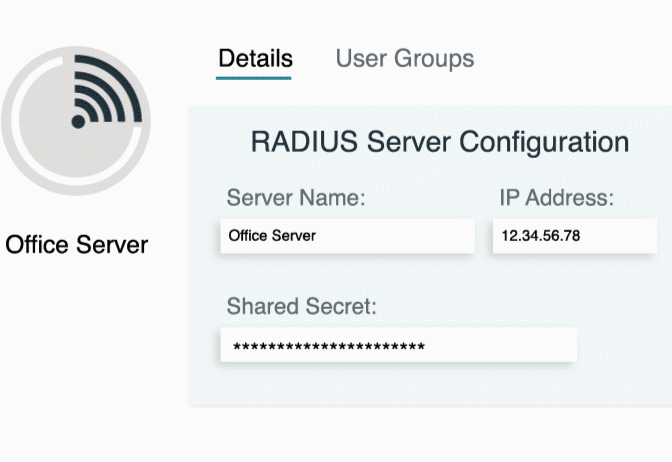Updated on March 7, 2025
HTTP downgrade attacks force secure connections to switch to less secure protocols, making communication vulnerable to spying and tampering.
This blog explains how these attacks work, the risks involved, and practical steps to protect against them.
What Is an HTTP Downgrade Attack?
An HTTP downgrade attack is a type of man-in-the-middle (MitM) attack where secure HTTPS connections are forced to switch to unencrypted HTTP. Attackers intercept and manipulate the communication to remove the encryption provided by TLS (Transport Layer Security). This exposes sensitive information, like login credentials, payment details, or personal data, to eavesdropping, content manipulation, or theft.
Why HTTPS Is Essential
HTTPS ensures that data transmitted between a user and a server remains encrypted and safe from interference. It relies on TLS to provide three critical security properties:
- Confidentiality – Ensures that sensitive information remains hidden.
- Integrity – Prevents data tampering during transmission.
- Authentication – Verifies the legitimacy of the website being accessed.
Reverting to HTTP compromises all three properties, subjecting end users and organizations to considerable risks.
Why Attackers Target HTTPS Downgrades
Attackers seek to weaken or disable encryption standards for the following reasons:
- To access information in plaintext, such as passwords, credit card data, or private messages.
- To inject harmful scripts or fake information into unprotected HTTP sessions.
- To reroute users to fraudulent websites for phishing attacks.
Ultimately, the goal is to exploit the victim’s trust and access valuable information with little to no detection.
How an HTTP Downgrade Attack Works
Step 1: A User Initiates a Secure Connection
The process begins when a user visits a website using HTTPS (e.g., https://example.com). Their browser sends a request to the web server, expecting a secure reply.
Step 2: The Attacker Intercepts the Request
A man-in-the-middle intercepts the request, blocks or modifies the connection, and forces a redirect to the insecure http://example.com.
Step 3: An Unsecured HTTP Session Begins
Instead of a secure HTTPS session, the user unknowingly interacts with the website via HTTP—exposing all data in plaintext.
Step 4: Exploiting the Unencrypted Connection
With no encryption in place, attackers can:
- Steal sensitive information (e.g., usernames, passwords).
- Insert malware or phishing links into the content being transmitted.
- Take over the user’s session by hijacking authentication cookies.
Common Techniques Used in HTTP Downgrade Attacks
SSL Stripping (HTTPS Stripping)
Attackers intercept HTTPS requests and change them to HTTP, removing encryption. This exposes sensitive data, which is then sent in plain text.
TLS Downgrade Attacks (e.g., POODLE)
These attacks take advantage of outdated or poorly configured encryption protocols like SSL 3.0. Hackers force the connection to use these weaker, easier-to-break standards.
Weak or Misconfigured Redirects
Improperly set up website redirects from HTTP to HTTPS can leave users at risk. Attackers can exploit these redirects to keep the session on the less secure HTTP.
Manipulated HSTS Policies
HSTS (HTTP Strict Transport Security) headers ensure browsers only connect to a site via HTTPS. Attackers can block or modify these headers to weaken this protection.
Security Risks and Implications
Man-in-the-Middle (MitM) Attacks
Attackers can intercept and collect sensitive data such as login credentials, financial information, and proprietary business details.
Content Injection
By inserting malicious scripts, attackers can distribute malware or alter the content of web pages in transit.
Session Hijacking
Attackers intercept authentication cookies during an HTTP session and take control of user accounts.
Phishing and Redirection
Attackers redirect users from legitimate pages to fraudulent websites. These phishing pages capture credentials and other data before forwarding users to the expected destination.
Real-World Example
One notable example is the attack against non-HSTS websites during public Wi-Fi usage. Attackers often set up fake Wi-Fi hotspots to spy on users and strip away secure HTTPS connections, exposing unencrypted HTTP traffic.
Defense Mechanisms Against HTTP Downgrade Attacks
Implement HSTS (HTTP Strict Transport Security)
Make sure your website includes an HSTS (HTTP Strict Transport Security) header. This forces browsers to only use HTTPS when connecting to your site, protecting users from attacks like protocol downgrade or cookie hijacking. It’s an easy and important way to improve your website’s security.
Preload HSTS settings in all major browsers to block insecure connections before they happen. By adding your site to the HSTS preload list, browsers will always connect securely, even on a user’s first visit.
Enforce HTTPS on All Pages
Turn off HTTP completely. Set your web servers to automatically redirect all HTTP traffic to HTTPS, ensuring users always connect to your site securely and protecting their data and privacy.
Use free tools like Let’s Encrypt to get HTTPS certificates. These certificates secure encrypted connections and are easy to set up, making it simple and affordable to switch your website to HTTPS.
Use Strong TLS Configurations
Turn off outdated encryption standards like SSL 3.0 and TLS 1.0, as they are no longer secure and can expose sensitive data to attacks.
Keep your TLS configurations updated to follow current industry standards and security protocols, protecting your systems from new threats.
Enable Secure Cookies
Set the Secure and HttpOnly attributes for cookies. This prevents cookies from being sent over unsecured HTTP connections or accessed by malicious scripts.
Deploy Content Security Policies (CSP)
Add Content Security Policy (CSP) headers to your HTTP responses to block unauthorized data injection from attackers. These headers reduce risks like cross-site scripting (XSS) and data injection attacks by controlling which resources can load on your website, giving you better security and control over your content.
Monitor for Downgrade Attacks
Review server and security logs carefully to spot unusual HTTP traffic, like high request rates, malformed packets, or unexpected access attempts that might signal potential threats.
Use TLS fingerprinting to catch unauthorized protocol downgrades, ensuring encrypted connections stay secure and don’t fall back to weaker protocols.
Educate End Users
Inform users about the risks of visiting HTTP sites, particularly on public networks, where the lack of encryption can leave their data vulnerable to interception by hackers. Explain how sensitive information, such as passwords or payment details, can be easily accessed on unsecured connections. Also, encourage users to double-check the browser address bar for the HTTPS lock icon.
Glossary of Terms
- HTTP Downgrade Attack: A cyberattack that forces communication from encrypted HTTPS to unencrypted HTTP, exposing sensitive data.
- SSL Stripping: An attack technique where HTTPS requests are intercepted and altered to initiate an HTTP session.
- HSTS (HTTP Strict Transport Security): A web security policy that ensures browsers connect to sites using HTTPS only, blocking all HTTP connections.
- TLS (Transport Layer Security): A cryptographic protocol used to secure communications and ensure data encryption over HTTPS.
- Man-in-the-Middle (MitM) Attack: An attack where a malicious actor intercepts and manipulates communication between two parties.
- Session Hijacking: A method of stealing authentication tokens from users, granting unauthorized access to their accounts.
- POODLE Attack: A TLS downgrade attack exploiting vulnerabilities in SSL 3.0 to compromise secure communications.






